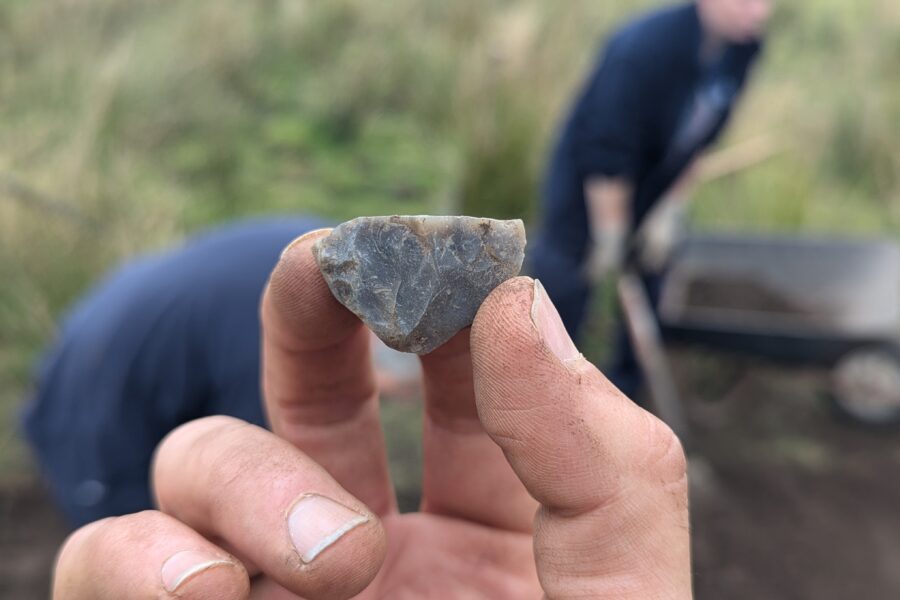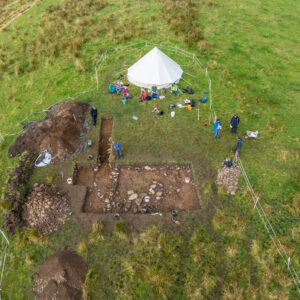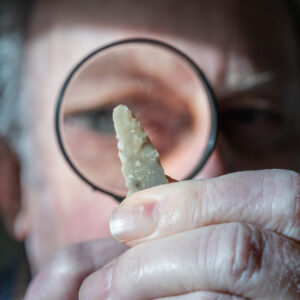Prehistoric Lives
The Tweed catchment is rich in evidence of prehistoric lives, from the Upper Palaeolithic to the late Iron Age. Some of the earliest prehistoric evidence for the area includes lithic scatter sites. These include Scotland’s only Hamburgian settlement at Howburn Farm, representing nationally significant and rare evidence of Late Glacial (12,700-9,800 BC) activity.
Lithic scatter sites also represent the later Mesolithic, Neolithic and Bronze Age periods and are known along the length of the Tweed. Some of these may represent settlements while others may be indicative of short-term occupation or craft working. The tool types, technologies, and raw materials used can offer us valuable insights into connections across the area in these different periods, and how they were connected to areas further afield.
A wealth of other prehistoric sites exist in the region with stone alignments, stone circles and burial cairns dotting the landscape. In the later prehistoric period scooped settlements and hillforts are found along the sides of the valley and promontory forts directly overlook the River Tweed. Prehistoric field systems including cultivation terraces and ridge and furrow are preserved in certain areas and provide evidence of prehistoric subsistence strategies.
Research on the Prehistoric Lives theme so far has comprised desk-based research including LiDAR workshops to identify potential prehistoric sites, as well as survey and excavations at a range of sites. One of the next steps will be undertaking site visits to review and record some the possible new sites identified on the LiDAR.


